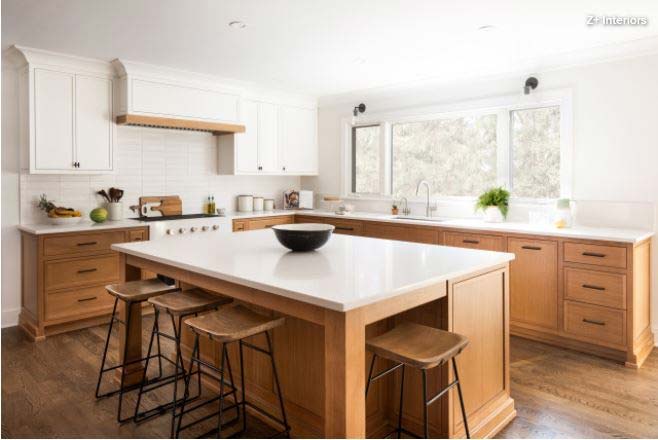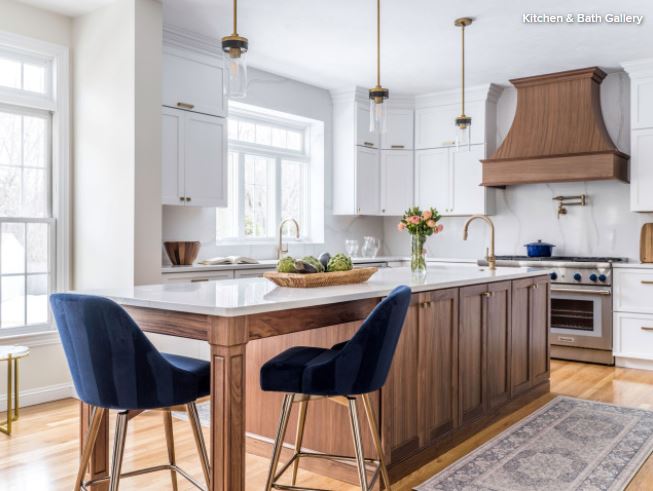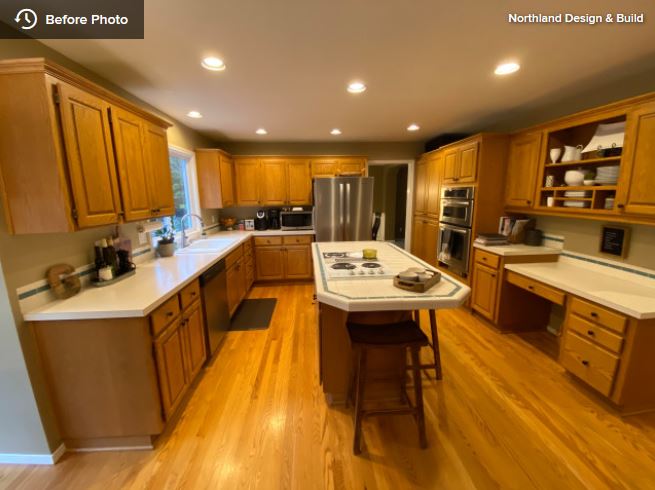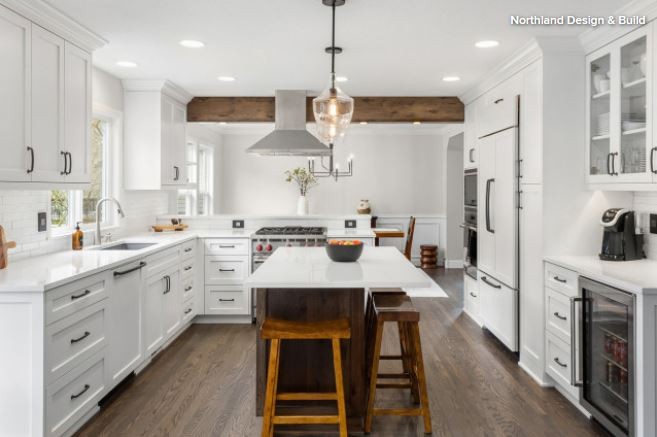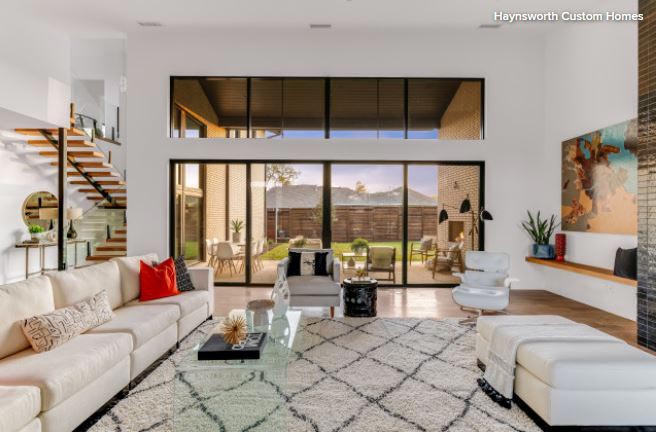Freezing temperatures and snow limit the scope of updates some homeowners can make this time of year, but there are plenty of important indoor projects that could pay off.
The weather outside may be frightful for some this time of year, and that presents a problem for anyone who needs to start sprucing up their home to go on the market this spring.
If you live in a part of the world where snow is piling outside your door, you may not be able to do much to the exterior, but that all-but-forced hibernation is prime time to perk up your pad’s interior. And updates are crucial now that so many buyers are hesitating amid high mortgage rates and inflated home prices.
“If a home feels tired, dated or too personal, you will not only lose showing traffic but also significantly decrease the potential for a lucrative offer,” said Traci Garontakos, managing partner at the Agency in Indianapolis.
The average buyer tends to have a hard time visualizing what a space can be and often can’t see past what is already there. A clean and inviting home at the moment of listing it can set the foundation for a successful sale by capturing the attention of potential buyers as the real estate market reignites next spring, said Sharon Parker of Tate & Foss Sotheby’s International Realty in North Hampton, New Hampshire.
“Refreshing key elements of your home before listing in the spring is a strategic move that goes beyond just aesthetics,” Parker said. “It’s about presenting your property in the best possible light and making that critical first impression count.”
The Financial Benefits of a Refresh
Updating not only increases traffic, but it can have a major impact on return on investment.
Depending on your location and market, certain improvements tend to have a broader impact on increasing a home’s overall appeal and value. For instance, a kitchen remodel often yields a high return on investment, somewhere in the range of 75%, according to Parker. Bathroom renovations tend to have an ROI of around 65%, while energy-efficient upgrades, such as new windows, insulation or replacing your old furnace tend to have an ROI of 60% to 80%, she said.
Refreshing a home will not only increase interest but it may also increase competition resulting in the potential for multiple offers and a higher sales price, Garontakos said. Refreshing also reduces the amount the seller has to invest during the inspection period.
“If a buyer feels a home looks tired, they will tend to believe it needs significant maintenance as well,” Garontakos said.
Lately, buyers are showing a readiness to pay a premium for a property that demands minimal immediate attention. “Thoughtfully preparing your home for the spring market is a crucial strategy for optimizing returns,” Parker said.
Clear the Clutter
When potential buyers walk in, they want to see a well-cared-for home where they can picture building their lives, and winter is the perfect time to focus on indoor renovations, especially those that make your home feel fresh and modern.
Because clutter and disorganization can distract buyers from seeing the home’s features, decluttering is crucial, said Smitha Ramchandani, an associate real estate broker at Christie’s International Real Estate Group New York City. Not only does it help make your house feel more spacious, but “a clutter-free home allows potential buyers to envision themselves living in the space and can positively impact their perception of the property,” she said.
Once you’ve cleared the way, have your home deep cleaned, including appliances, windows and carpeting. Then consider hiring someone to have it staged, which can play an important role in showcasing a home’s potential and help a buyer disregard the need for updates. ‘
“Staged homes often photograph better and create a visually appealing narrative for potential buyers. Staging helps highlight the property’s strengths and can facilitate an emotional connection with prospective buyers,” Ramchandani said.
While staging can certainly set a fresh tone, so can a coat of new paint.
“A fresh coat of paint can make a significant difference in a home’s appearance. Neutral and modern color schemes tend to appeal to a broader range of potential buyers, providing a clean and well-maintained look,” Ramchandani said.
Walls and trim make up one of the largest surface areas of a home, so it stands to reason that freshening those up will have a dramatic impact, said Marybeth Emerson, chairman agent at the Agency in Boulder, Colorado. “These areas take a subtle beating on a daily basis and, before you know it, things start to look a little tired.
Garontakos suggests using a matte finish on the walls to reduce drywall imperfections and touch up any trim and casework.
Consider Details Like Floors and Fixtures
If your space needs more major updating, renovating high-impact areas like the kitchen and bathrooms or replacing dated or discolored flooring or carpeting can still be done in winter.
“Flooring falls into the category of large surface areas of a home that create tremendous visual impact for a minimal/modest investment,” Emerson said. “Whether it’s replacing carpet or refinishing wood floors with a more current stain color, the impact is dramatic and the perceived value for a buyer is high,” she said.
Small details, like a dated bathroom or weathered floors or walls, give a buyer reason to believe the home hasn’t been properly maintained, said Ruben Ramos of Daniel Ravenel Sotheby’s International Realty in Savannah, Georgia. “This is the opposite of the picture that you want to paint for a buyer.”
Even if you don’t do a complete overhaul, generally, upgrading key fixtures, especially in focal points like the kitchen and bathrooms, elevates the overall aesthetic appeal, Parker said.
Garontakos’s favorite refresh is lighting.
“You do not need to spend a lot on lighting but consider purchasing large lights with a big impact. Linen drum shade pendants, milk glass fixtures and wide candelabra lights can showcase a home very well,” she said. And don’t be afraid to mix finishes like chrome and brushed brass or black and chrome. “Keeping selections classic and traditional with a modern edge is always a win,” Garontakos said.
Remove dated and mismatched lighting fixtures and replace the old fixtures with more updated and cohesive ones, Emerson says. “The goal is to streamline the look so that the home seems well thought out. Coordinated lighting sets the mood throughout a home and elevates the look.”
Lastly, Parker noted the importance of a pre-listing home inspection for an added layer of transparency.
“It’s a strategic move that allows you to address any potential concerns proactively and maximizes your home’s market appeal. It’s also seen as a well-maintained investment in the competitive spring real estate market, which in turn tends to produce cleaner and higher offers,” Parker said.
Give the Exterior Attention
Despite the winter weather, sellers can still take proactive steps to prepare the exterior of their homes for a spring listing.
“This includes checking for any winter-related damage, such as ice dams or issues with roofing and gutters, inspecting windows and doors for drafts or damage and servicing the HVAC system for optimal performance,” Parker said.
Even if you have a blanket of snow covering your yard, strategic planning for landscaping improvements demonstrates foresight and attention to detail, Parker said.
“By addressing these aspects, sellers can present their homes in the best possible light, despite the challenges of the winter season, paving the way for a successful spring listing.”
Winter is the ideal time to plant your spring bulbs, such as allium, tulips and daffodils, Ramos said, noting he prefers to plant bulbs now that will flower from early spring to late summer.
Parker also suggests focusing on planning and preparing your garden beds. “Clear away any debris, trim back dormant plants and address any winter-related damage to create a solid foundation for future landscaping,” she said.
Additionally, consider adding subtle enhancements such as decorative elements, well-maintained pathways and thoughtfully placed outdoor lighting to elevate your winter curb appeal ahead of time. “By proactively addressing these tasks, you’ll ensure your outdoor area is poised for an inviting showcase when spring finally arrives.”








